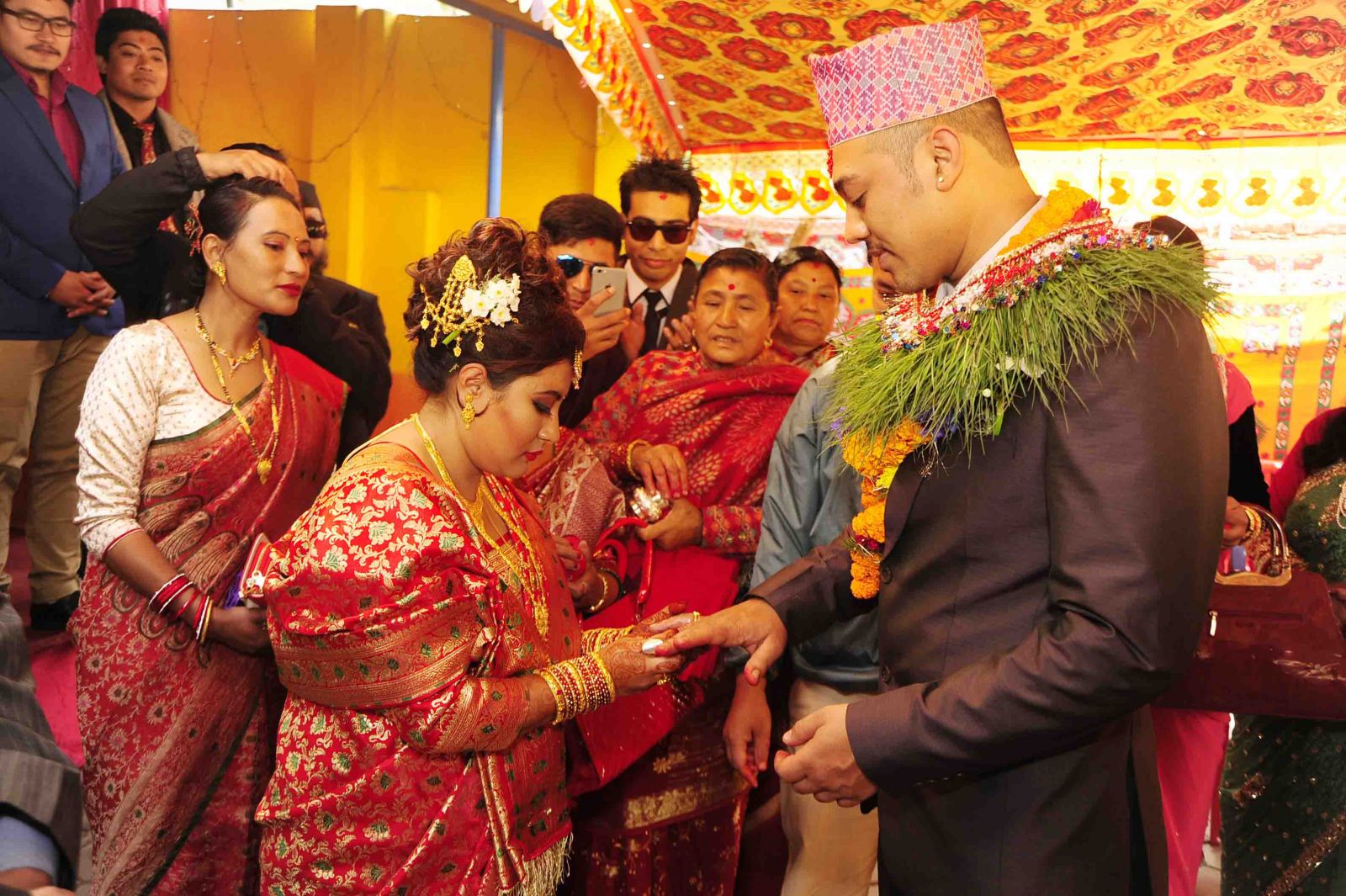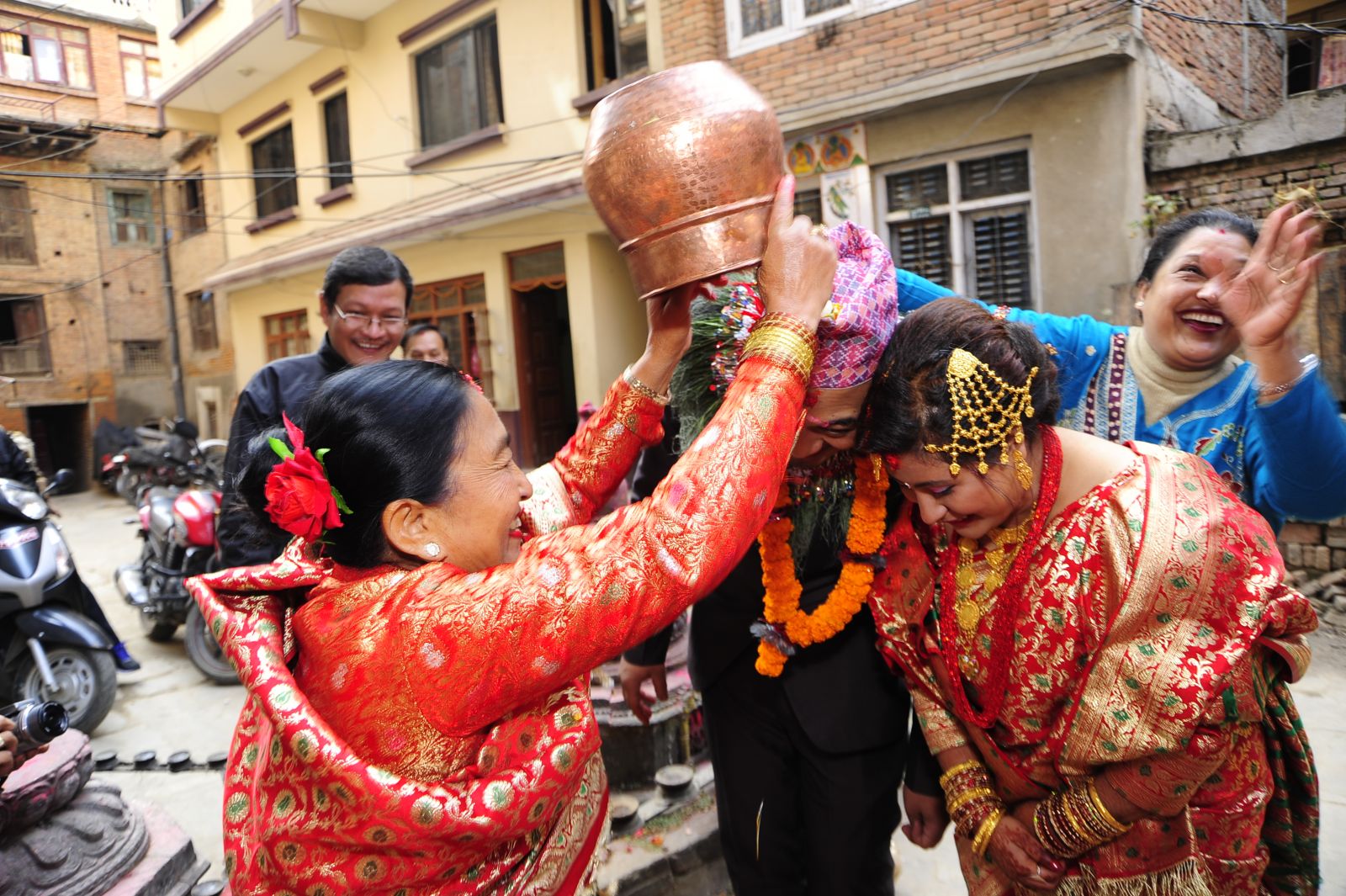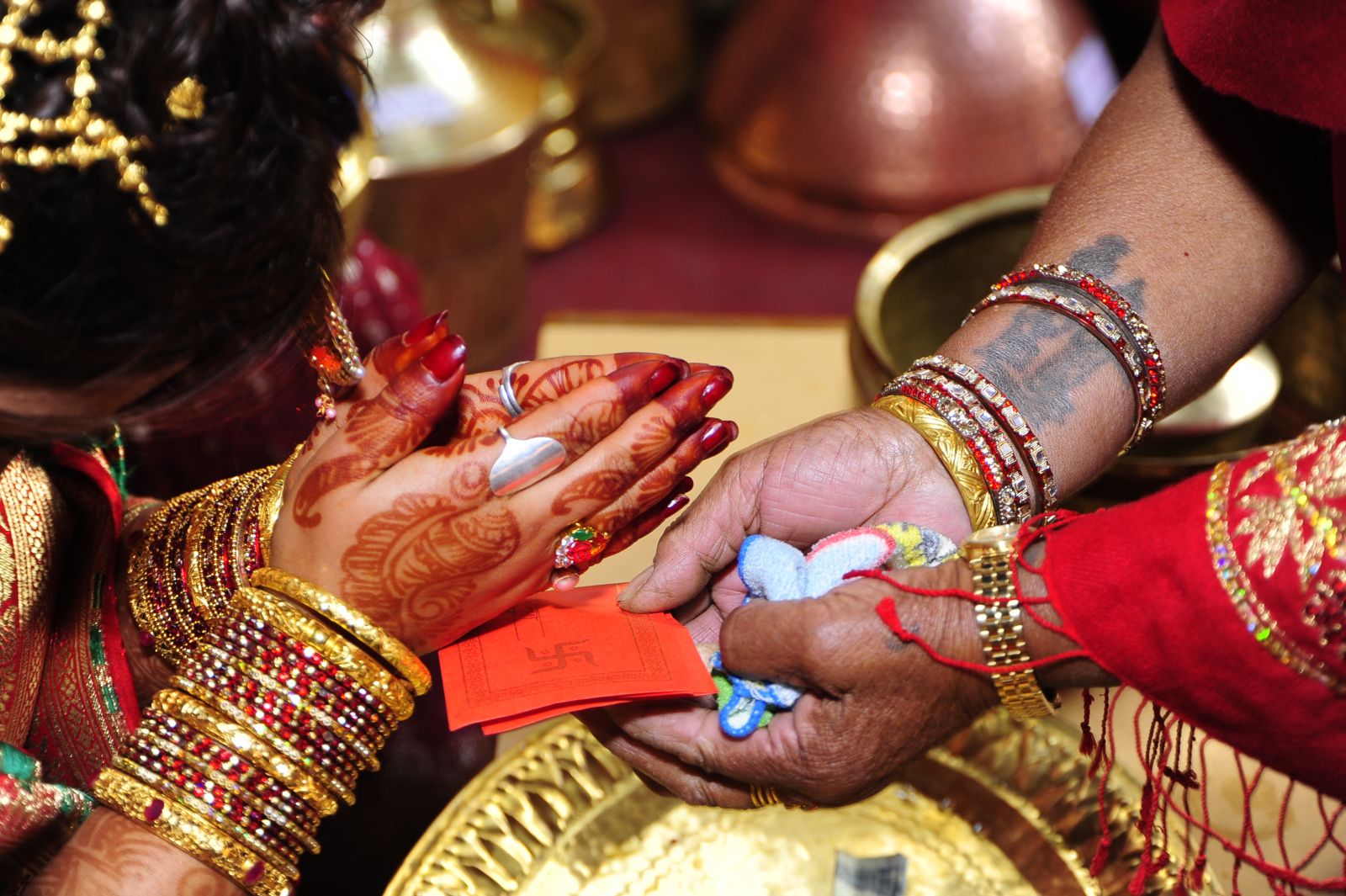
An Elaborate Ritual called Marriage
A new step for a new life, and thus having the greatest significance for both men and women.
Marriage is that special occasion where we decide to spend our whole life with another person, through both the ups and the downs of the coming years of togetherness. There are different ways to get married, with unique facets to the ceremony in various cultures and traditions. In Newar tradition, there are different castes with their own different rituals. This is how people of the Udaya Samaj get married: first, the boy’s parent’s asks the lami (middleman) to find a potential girl for marriage. If the parents and the girl agree, then they send the horoscope of the girl through the same lami. They check both of their horoscopes to find out whether they are compatible to get married to each other. The first step of the marriage rituals is called Gwe-biu, which takes place either on a Monday or a Thursday.
Gwe-biu, also known as supari diney, is actually the engagement ceremony. The sister of the groom and the lami are sent to the bride’s home, along with the engagement ring, a silver pot (lampicha) with supari (betel nuts), and some gifts. Then, the next day, a gift in the form of lakha-mari, a sweet made of flour and pulse and boiled ghee, and dipped in liquid sugar, used solely for matrimonial ceremonies, is sent to the bride’s home, along with some dried fish, as well. This ritual is called Lakha-biye.
 |
 |
Before the marriage ceremony, representatives from the groom’s family: the groom’s uncle, a Jyapu, and the lami are sent to the bride’s home with a golden bracelet (Kalya), gifts,. and food. This ritual is called Kalya Nhynke Chhoye. After receiving these gifts, the bride’s aunt paints her legs with alah (a mixture of red color and water) to decorate her as a bride. In the evening of the big feast (Payena Biye Bhwe), relatives and friends of the bride are invited, who present her with different household utensils as dowry, which is called Kosa.
On the day of the Janti, the groom, groomsmen, and his relatives go to fetch the bride with a musical band; this is called Janti Wanegu. They carry one pathi (approximately one gallon) of milk with some molasses and cardamoms to the bride’s home as an act of repayment to the bride’s mother for suckling her as a child; this ritual is called Durdai. In the evening, a witty exchange takes place in front of a local shrine between the priests of both the bride’s and groom’s families in which the bride’s responsibility is passed on to her father-in-law, with the presiding deity as witness. This is called Bhaumacha Khan Iha-ye.
Next day, the bride and the groom are taken to their own religious place, for example, Bhadraikali or Bijeshwori, for the Swoyambar (marriage ceremony) after which the bride now goes to live with the groom. The next day, the bride’s family members visit the groom’s home for Khwa Sweu, a ritual in which the bride is showered with gifts. The next day, she is sent to her own house, and the brother of the bride goes to receive the groom. The groom is welcomed in the bride’s house, and a proper introduction takes place between him and all the members of the bride’s family. This ritual is called Duchyaku. Later, the bride comes home with the groom. The following day, the bride is sent home to rest for a few days.
This is how a marriage is conducted in the Udaya Samaj. There are different ways to get married with different rituals; the Brahmins and Chhetris have different ways of getting married, and so do the Christians and Sherpas and other communities. Getting married is a new step in life for both men and women, and the elaborate rituals serve to endow gravity on the occasion, signifying the new responsibilities and a life of caring and sharing.










